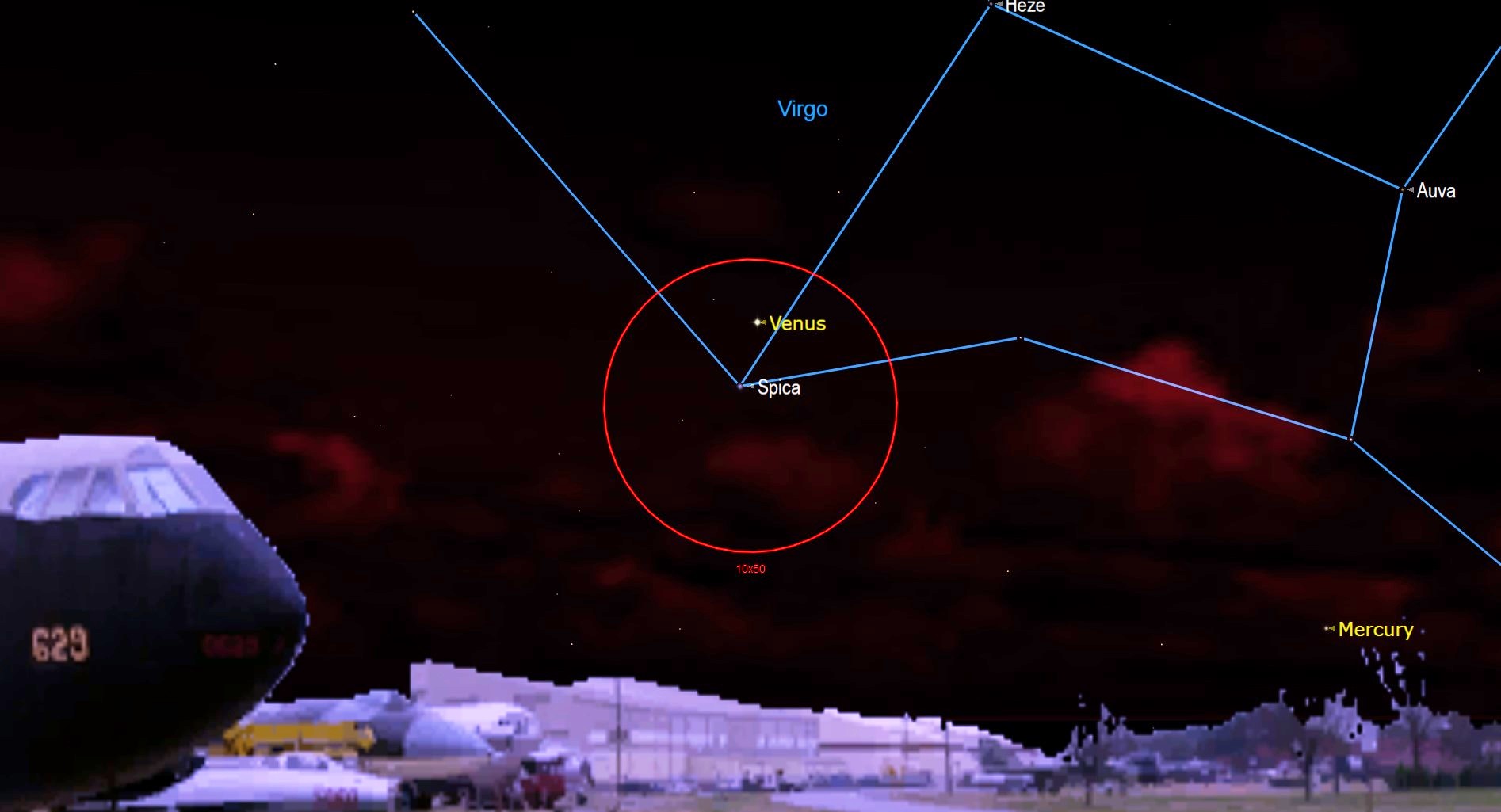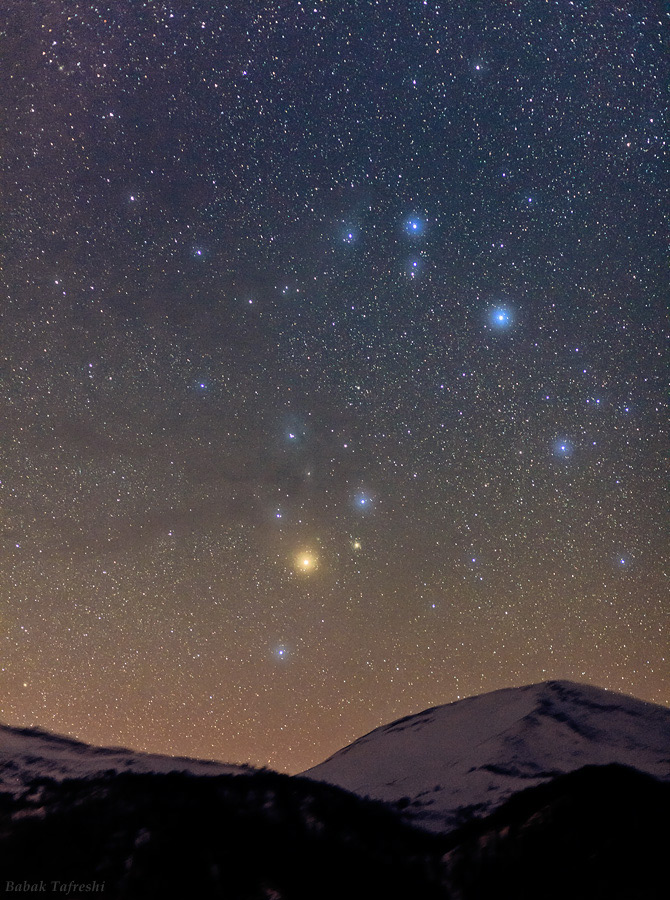
In this week's Night Sky column, we provide a potpourri of factoids concerning some of the more prominent objects appearing in the summertime sky.
Probably the most conspicuous of the summer star patterns is the famous Summer Triangle, composed of three of the brightest stars in the sky: Vega, Altair and Deneb. Each of these stars surpasses our own sun in terms of luminosity: Altair is nearly 11 times brighter, Vega 40 times brighter, and Deneb an incredible 200,000 times more luminous. Yet Vega appears much brighter than Deneb because it is so much closer to us.
In making a comparison between the luminosities of Vega and Deneb, we can use the Tom Hanks survival film "Cast Away" (2006) as an analogy. There is a scene in that movie where Hanks' character attempts to signal a passing ship using nothing more than a penlight flashlight, but the ship is too distant to notice him.
- Best telescopes 2021: Top picks for beginners to view planets
- Nikon Z6 review: How is it for astrophotography?
It's obvious that Hanks' signaling would have been far more effective if he'd had a lighthouse at his disposal. In this case, we can think of Vega as the flashlight, while Deneb would be the lighthouse.
While one could define what a light-ear is and apply it to the relative distances of these three stars, it is perhaps more interesting to consider that the light you are seeing emitted by these stars now actually started its journey to Earth many years before. In this way, stargazers can do something that no one else can do: Look back in time. For instance, upon pointing to Altair, rather than simply commenting that it is 17 light-years away, we instead could say, "There is 2004!" And then tie that comment in with a famous event that occurred in that particular year. In the case of Vega, 25 light-years distant, the year in question would be 1996.
And for Deneb, we're looking backward to around 600 B.C.!
Altair is spinning rapidly on its axis, at a rate of 178 miles per second (286 kilometers). As a result, it's an oblate spheroid, somewhat egg-shaped and dramatically flattened at both of its poles.
Get the Space.com Newsletter
Breaking space news, the latest updates on rocket launches, skywatching events and more!
One of Vega's claims to fame is that it's the very first star (other than the sun) to be photographed. It was captured on July 16-17, 1850, by William Bond and John Adams Whipple at the Harvard College Observatory, using a daguerreotype — a photographic process that employed an iodine-sensitized silvered plate and mercury vapor.
A twinkler with color

Another star worth considering lies far to the southern part of the sky; Antares in the constellation of Scorpius the Scorpion. Antares is a bright star shining with distinct reddish coloration. Many people believe that stars all shine with a silvery-white color, but that's not true at all. In the retina of our eyes are two types of photoreceptors, rods and cones. Cones are capable of color vision and are responsible for high spatial acuity. They become active at high light levels (photopic vision), so if a star is bright enough, its true color will readily become evident. Stare at Vega and you'll immediately recognize its bluish-white tinge, then shift over to Antares and its ruddy hue becomes all the more evident.
The name Antares is Greek for "Rival of Ares" (the Roman version of Ares is Mars). There are times when the planet Mars outshines Antares, and some astronomy guides make reference to this star being a poor rival, but the real rivalry is in the colors of each one. The reference to Mars — the god of war — comes from the association with what is usually shed during wars: blood. In our sky, Antares glows a distinct blood-red hue, while Mars, especially when it is near and bright to us, appears closer to a yellow-orange tinge; the color of desert sand, which indeed covers much of the Martian surface. So, in the sky, regardless of their differences in brightness, Antares will always rival Mars in terms of its ruddy color.
Another factoid to mention about Antares is that it is one of the largest stars that can be seen with the naked eye. It's roughly 680 times the size of our sun — so immense that if it replaced the sun in our solar system its sheer bulk would swallow up the orbits of the first four planets — Mercury, Venus, Earth and Mars. If we could shrink the sun down to the size of a baseball, Antares would be a globe measuring 130 feet (40 meters) in diameter.
Antares also appears in the flag of Brazil, which displays 27 stars, each representing a federated unit of Brazil. Antares represents the state of Piauí.
Comet crumbs
As you are reading this, Earth has passed through the annual Perseid meteor shower. With each passing day, our planet will move a little deeper into this swarm of meteoroids, reaching the densest part of the swarm on the night of Aug. 11-12.
The average sporadic meteor seen in the night sky is a small particle of nickel, stone and iron, probably no larger than a grain of sand. Billions of these particles drift in the space between the planets, and millions of them strike Earth's atmosphere every 24 hours. They arrive at speeds that range between 7 and 45 miles (11 and 72 km) per second, and friction with the atmosphere consumes most of them to white heat.
While mass is not quite the same as weight, we may say for the sake of simplicity that a meteoroid producing a typical bright meteor "weighs" about 0.01 ounces (0.25 gram). Very few meteoroids "weigh" more than a few grams. Of the large meteoroids (those larger than a grain of sand) about a half a ton hits Earth every day. And enough meteoric material does come in from space to add 5 to 10 pounds (2.3 to 4.5 kilograms) each year to every square mile of Earth's surface.
Records of the Perseid meteors go back as far as A.D. 811. But it was not until 1862 that we discovered their source. In that year, a comet detected independently by two astronomers, Lewis Swift and Horace Tuttle, put on a spectacular show in the late-summer evening sky. Later, calculations showed that this comet was moving in roughly the same orbital track as the Perseids, indicating that the dusty material trailing behind this comet was very likely causing the annual display of "shooting stars" seen in August. During midsummer each year, as Earth moves around the sun in its orbit, our planet closely intersects the debris trail of comet Swift-Tuttle.
Following its discovery, astronomers calculated an orbit for the comet that indicated it would come back around the year 1982, plus or minus one year. But it didn't, leading to a consensus that the comet fragmented. However, one astronomer pointed out that non-gravitational forces — jets of gas and dust emitted by Swift-Tuttle — served to dramatically slow the comet, and would delay its return until late 1992.
That was exactly what happened, and for several years after the time of the comet's return, displays of the Perseid meteors were unusually robust and accompanied by many outstandingly bright meteors. Swift-Tuttle is expected to make an unusually close approach on Aug. 5, 2126, passing just 14.2 million miles (22.9 million km) from Earth.
This year is a favorable year for viewing the Perseids, as the peak comes several days after a new moon, leaving much of the night dark and without any hindrance from moonlight.
Joe Rao serves as an instructor and guest lecturer at New York's Hayden Planetarium. He writes about astronomy for Natural History magazine, the Farmers' Almanac and other publications. Follow us on Twitter @Spacedotcom and on Facebook.
Join our Space Forums to keep talking space on the latest missions, night sky and more! And if you have a news tip, correction or comment, let us know at: community@space.com.

Joe Rao is Space.com's skywatching columnist, as well as a veteran meteorologist and eclipse chaser who also serves as an instructor and guest lecturer at New York's Hayden Planetarium. He writes about astronomy for Natural History magazine, Sky & Telescope and other publications. Joe is an 8-time Emmy-nominated meteorologist who served the Putnam Valley region of New York for over 21 years. You can find him on Twitter and YouTube tracking lunar and solar eclipses, meteor showers and more. To find out Joe's latest project, visit him on Twitter.









